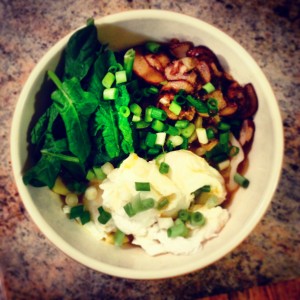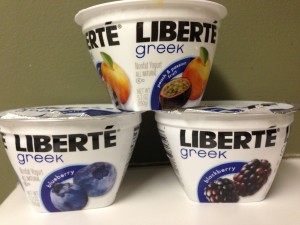I love the excitement that surrounds the holiday season and culminates with New Years Eve! Granted, I am not a particular fan of going out on the town to celebrate New Years Eve because there tends to be a little too much excitement on some people’s behalves, prices are twice what they normally are, and it is either the most amazing night, or you set your expectations too high, and the night is ruined by something silly (or someone crying.) I’d rather wage my bets and be with loved ones and close friends, which may go hand in hand with my decision to not make resolutions for the New Year.
It’s not that I think I am someone who is above reflecting upon that last 12 months and finding ways to improve myself, or my life in some way, we can all find ways to make positive changes, but that is more of a process that I do a few times a year, on dates that are important to me (a few random dates that would mean nothing to anyone else annually and my birthday.) I think it is great when people feel the excitement that comes with ending one year and beginning another, and with that fervor comes the decisions to make some changes that are deemed resolutions that they will keep up all year…and usually fade away a couple of months later.
Some of the most common New Years resolutions that I hear year after year:
“I will go to the gym every day.”
No, you won’t. It’s actually not healthy for you to train 7 days a week; you will actually over train, your body will need a break, and you will take that break, feel guilty about it, and by the end of February and beginning of March your resolution is caput. A lot of people tend to stay away from the gym when they feel guilty, instead of getting back on the horse and getting to the gym, stay away from the gym. Don’t be that person, set a more realistic resolution, like getting to the gym 3-4 times a week or try to get 20 minutes of exercise a day 5 days a week, which can include walking a couple of miles, doing yoga at home, walking stairs, really any type of exercise that you don’t have to go to a gym to do; you won’t always have the time to get to a gym, it’s a fact of life. Set a realistic goal that you actually know you can attain, and you will get in shape and feel better about yourself.
“I am going to only eat healthy foods. No more snacks and unhealthy food.”
This is a great resolution, but it is really tough to maintain. People start off awesome with this one: preparing healthy snacks and lunches for work, the night before, they feel good about being healthy and make time for it, then as there is a deadline or need to work late, or the winter blues get you down, you don’t have the energy at night one night to stay up and prep those meals, and there goes the healthy cycle. For women, there is that monthly draw to sweet or salty foods as part of our hormonal flux, which is unfortunate, but VERY real. And, it is OK to indulge in sweets every now and again. Because if you deprive yourself of those snacks that you crave, instead of just allowing a small indulgence every now and again, you end up craving more and more and you tend to over indulge. Eating healthy is an awesome goal, and I think that more people should make it a habit/goal, but set your sights to something realistic, which allows you small cheat meals every now and again. Even the people you see in Men’s/Women’s Health magazine allow themselves a cheat day, and sometimes you can trick yourself with fruits and veggies to curb your sweet tooth; just plan ahead and know that you will want a sweet or salty nosh at some point, so plan to make some baked sweet potato “fries” with some sea salt to satisfy your salt craving, or have fresh fruit already cut up to kill off your sweet tooth…and have some chocolate on hand just in case of emergencies! When you eat healthy, you tend to feel better about yourself, so while I fully support this resolution, don’t just say it, do it!
“I am going to get more organized.”
Some people are inherently organized, some people aren’t. This is something that a quick stop to the Container Store and $500 won’t fix. This is a true lifestyle change that takes time and effort. I applaud all of you who want to get organized: having an organized brain and home is a crucial part of a healthy lifestyle and it helps you stay on track with every other goal you set for yourself. Part of getting organized can be prepping healthy meals for you and your family, making a schedule to get to the gym, or de-cluttering your home. Setting a resolution with lots of opportunities gives you more opportunities to succeed!
Set yourself up to succeed in the New Year, don’t set yourself up to fail! If you hit your goals and keep going, you will only feel better and better about yourself and keep moving forward. So, Cheers to 2015 and the year of setting goals and creating resolutions that we can actually attain towards a healthy lifestyle!
Yours in Good Health
B








